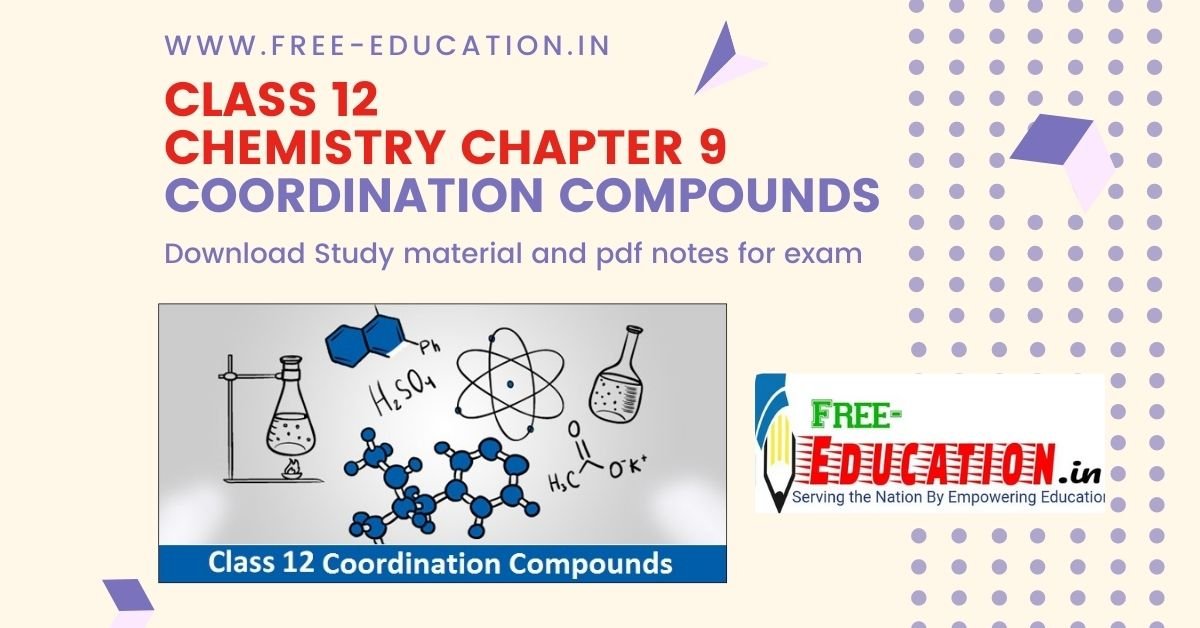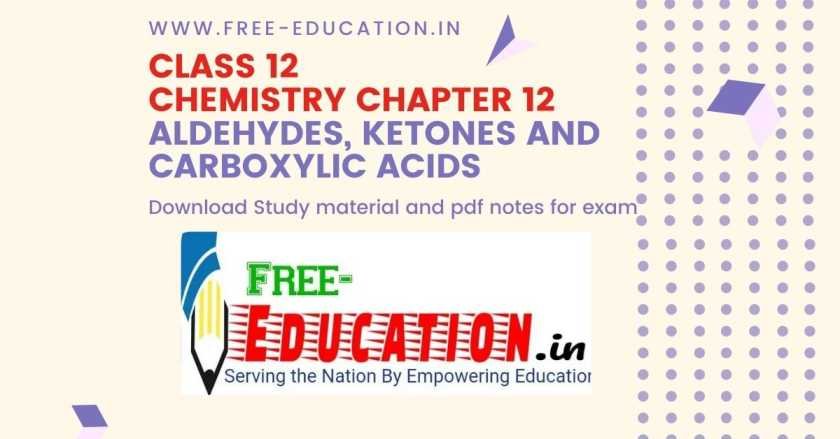CBSE Class 12 Chemistry Important Questions Chapter 9 – Coordination Compounds
1 Mark Questions
1. What is the shape of?
Ans.
Geomectry = Trigonal bipyramidal/span>
2. What do you understand by stability of a complex and instability constant of coordination compounds?
Ans. The stability of a complex in solution is the degree of association between the two species involved in the state of equilibrium. The instability constant is reciprocal of the formation constant. It is also called dissociation constant.
3. How is EDTA used in estimation of hardness of water?
Ans. Hard water is titrated with complex for estimation of its hardness. During the process, the ions form complex with EDTA replacing. The method is based on the difference in the stability constant of calcium and magnesium complexes.
4. Explain the role of complexes in metallurgy with an example.
Ans. Some extraction processes make use of complex formation e.g. during metallurgy of Gold, it combines with cyanide in the presence of oxygen and water to form the complex in aqueous solution by addition of zinc.
5. How is excess of copper and iron removed from body?
Ans. Excess of copper and iron are removed by chelating Ligands D – penicillamine and desferrioxime B through the formation of coordination compounds.
6. Define – isomerism.
Ans. Isomerism is the phenomenon of existence of two or more compounds with same chemical formula but a different arrangement of atoms.
7. Indicate the types of isomerisms shown by the complex?
Ans. Both geometrical and optical isomerisms will be present.
8. Give an example of coordination isomerism?
Ans. Example of coordination isomerism is
and
9. What are complex compounds?
Ans. Complex compounds or coordination compounds are those compounds in which the metal atoms are bound to a number of anions or neutral molecules.
10. Give some examples of coordination compounds.
Ans. Examples of coordination compounds are chlorophyll, haemoglobin and vitamin.
11. What were the two valences given by Werner for coordination compounds?
Ans. Werner gave the concept of two valences-
(a) Primary or ionisable valences.
(b) Secondary or non ionisable valences.
12. Enlist the common shapes of Werner’s complexes.
Ans. The common shapes given by Werner were – octahedeal, tetrahedral and square planar.
13. What do you understand by the term coordination number?
Ans. The total number of ligand donor atoms to which a metal is directly bonded is called its coordination number e.g. in complex , the coordination number of Pt is 4.
14. Define oxidation state of a metal. Distinguish between homoleptic and hetroleptic ligands.
Ans. The oxidation number of a metal is the charge it would carry if all the ligands are removed along with the electron pairs that are shared with the metal atom or ion.
15. What IUPAC names of following complexes?
(i).
(ii).
(iii).
(iv).
(v).
(vi).
(vii).
(viii).
(ix).
(x).
Ans.(i) Hexamminecobalt (III)ion
(ii). Trioxalatoferrate (III) ion
(iii). Tetracyanonickelate (II) ion
(iv). Tetraamminedichlidooroplatinum (IV) ion
(v). Tetrachloridoonickelate (II) ion
(vi). Pentamminenitrito –O-cobalt (III) ion
(vii). Pentamminechlorido cobalt (III) Chloride
(viii). Pentaquacyano chromium (III) ion
(ix). Hexanitrito –N-cobaltate (III) ion
(x). Tris (ethylenediamine) Cobalt (III) Chloride
16. Write formula for the following compounds.
i). Hexammineplatinum (VI) Chloride
ii). Potassium hexacyanoferrate (III) ion
iii). diamminedichloridoplatinum (III) ion
iv). Tetramminedichloridocobalt (III) ion
v). Amine chlorobis (elhylenediamine) cobalt (III) ion.
vi). Hexaamminechromium (III) hexacyanocobaltate (III)
vii).Pentamminenitro –N- Cobalt (III) Chloride.
viii).Pentamminebromidoocobalt (III) sulphate
ix). triamminediaquachlorocobalt (III) Chloride
x). Tetramminedichloridooplatinum (IV) Bromide
Ans.(i)
(ii).
(iii).
(iv).
(v).
(vi).
(vii).
(viii).
(ix).
(x).
17. How many ions are produced from the complex in solution?
(i) 6 (ii) 4 (iii) 3 (iv) 2
Ans. (iii) The given complex can be written as
.
Thus,
along with two Cl- ions are produced.
Mohd. Sharif Qualification: B.Tech (Mechanical Engineering) [Founder of Wisdom Academy] [Aim Foundation & Free-Education.In] [Engineer By Profession | Teacher By Choice] [Blogger, YouTube Creator]






